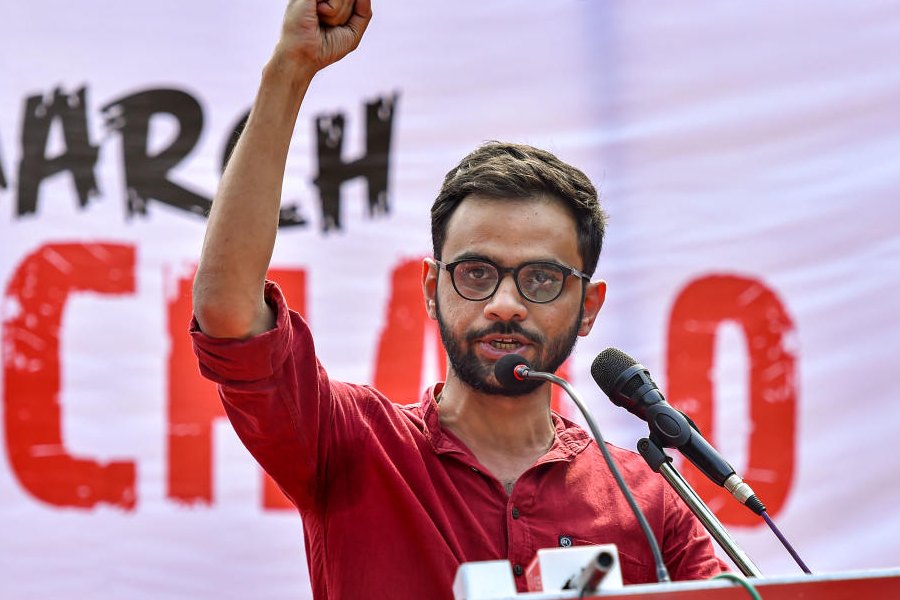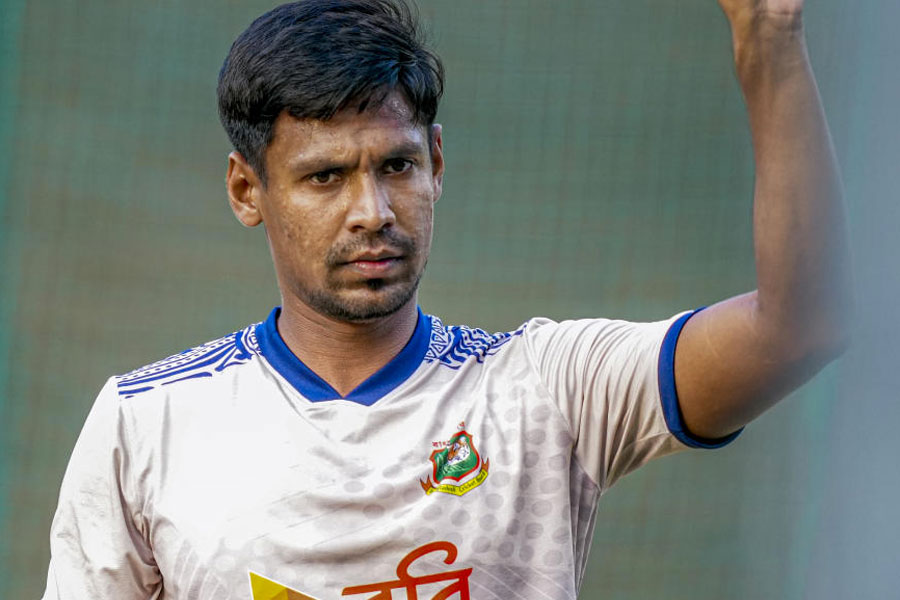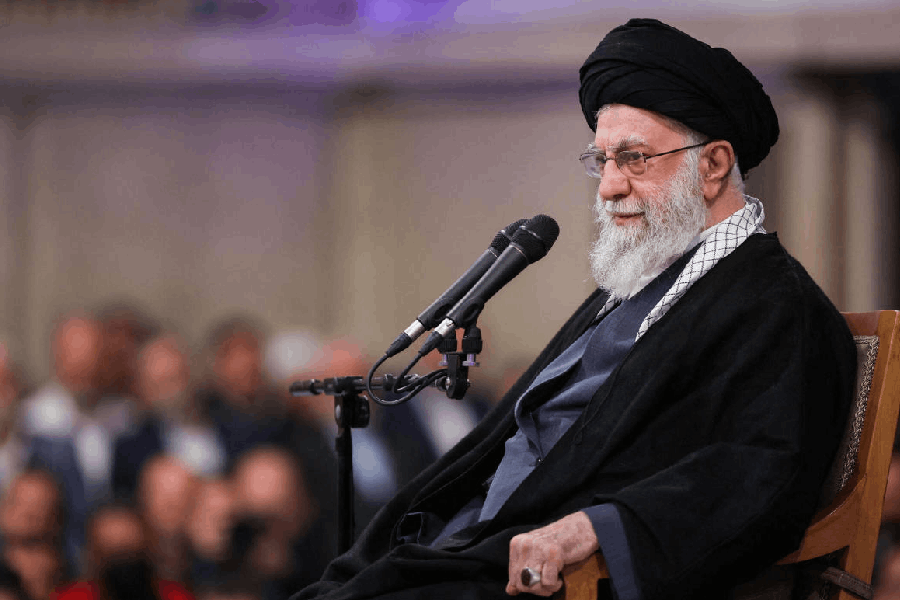The conflict in Manipur that reached its 26th day on Sunday despite continued curfew has its roots in a long history of ethnic strife, feelings of deprivation among the state’s tribal communities and heartburn over land.
However, conversations The Telegraph has had with several people from the state and elsewhere suggest a new pattern for the current spate of violence: an ethnic conflict of decades having taken on the shape of a communal conflagration, allegedly perpetrated by Meitei organisations said to enjoy protection in the state.
One striking feature of the violence has been the widespread torching of Kuki churches, blamed on the predominantly Hindu Meitei community that dominates the government machinery. Overall, Meiteis, who include some Christians and Muslims, make up 53 per cent of Manipur’s population.
“From May 3 onwards, the Meitei community has been burning churches, which is unprecedented in Manipur,” Reverend Dr Jacky Simte, a Kuki Church leader in Manipur, told this newspaper on Sunday.
“More than 250 churches have been burnt. Even today, some Meiteis went about burning Kuki homes in Sugnu village and they set the church on fire.”
The tribal Kukis, who are overwhelmingly Christian, feel that a radicalised Meitei community is targeting them in a campaign of ethnic cleansing. Sections of Kukis have retaliated — especially on their turf in the hills that surround the Meitei-dominated Imphal valley.
After rumours spread in Manipur in the initial days of the violence that Hindu places of worship were under attack in Kuki areas, organisations of local Biharis, Bengalis and Marwaris issued a joint statement on May 9 saying non-Manipuri Hindus had not been harmed.
Address lists
Multiple sources in Manipur and elsewhere — including security force officials — said the violence had been perpetrated largely by radicalised Meitei youths belonging to two organisations: the Arambai Tenggol and the Meitei Leepun. The Tenggol was reportedly dissolved a few days ago after its name was mentioned in connection with the violence.
The sources blamed the situation on a rise in Meitei nationalism coinciding with the BJP assuming power in the state since 2017.
A senior army officer with the Eastern Command said he saw striking similarities between the militias’ tactics and a Hindutva outfit blamed for the Ram Navami procession violence in several parts of the country. He added that the targeted attacks on the Kuki community, its properties and its churches resembled the violence seen against minorities elsewhere in India.
“Radicalised youths belonging to the Arambai Tenggol and the Meitei Leepun created havoc by setting Kuki homes and businesses on fire. They not only vandalised Kuki churches, they also attacked the churches of the small community of Christians among the Meiteis themselves,” a paramilitary commandant said.
He alleged that these two outfits had the government’s blessings and that the authorities had provided them with the addresses of Kuki households. The vigilantes allegedly marked these homes with red paint before launching targeted attacks.
The officer said that while the Meitei militias tried to ensure that no Kuki was left in the Imphal valley, retaliatory action in the hills had left Kuki-dominated districts like Tengnoupal, Churachandpur and Kangpokpi virtually without Meiteis.
State role
Many Kukis blamed the state BJP government’s “politics of hate” for the communal strife in the state.
Reverend Simte said that chief minister N. Biren Singh’s recent comments about peaceful coexistence were mere “lip service” and held him responsible for the attacks on Kukis.
“He may talk about peace, but he is not talking about the truth — that’s because he will lose his job if he tells the truth,” he said.
Multiple others said the role of the state police indicated that the ruling dispensation was “aiding and abetting” the violence.
“There are visuals of the Meitei militias entering police stations and police training centres and looting the armouries while the cops do nothing to prevent them. They attacked us with these arms,” a Kuki source said.
He said the Kukis had been disarmed in a planned manner months before these attacks.
“We are primarily a hunting community and a lot of people keep licensed arms. But in March, all licensed guns were taken away by the administration. It’s clear that the attacks had been planned long in advance.”
On Sunday, the Manipur Tribal Forum Delhi sent a WhatsApp message to “The Commander, Spear Corps” of the Indian Army alleging an “impending attack of (sic) Pallel township by combined forces of armed Arambai Tengol and Manipur Police Commandos on 28th May 2023”.
“…You have received intelligence inputs that armed Arambai Tengol, large number of Meitei Mob and Manipur Police Commandos have gathered in Kakching to attack and burnt (sic) down Pallel township in Manipur tonight,” the message said.
"To enable them to attack Pallel without any interference by Assam Rifles, the Meitei meira paibis/women folk have also blocked the Assam Rifles camp in Pallel."
Old fault lines
The Meiteis and Kukis have been separated by history and geography.
Geographically, the majority Meitei community is concentrated in the densely populated valley that accounts for just 10 per cent of Manipur’s area, while various tribal communities — including the Kukis and Nagas — live in the hills that make up 90 per cent of the state’s territory.
Historically, they lived under different administrations. After the British gained control over Manipur in 1891, the valley was ruled by Manipur’s Hindu king while the hills were governed by the British through the tribal chieftains.
The scale of development has been largely skewed in favour of the valley, too. As universities, medical and engineering colleges, and tertiary hospitals came up in the valley, a sense of deprivation grew among the tribal communities.
Of the 60 Assembly seats, 40 were in the valley and just 20 in the hills, leaving the tribals feeling politically marginalised.
All this left Manipur vulnerable to periodic turmoil right since Independence.
New paradigms
The nature of the strife changed under the current government. There was an attempt by the Meiteis — led by two-time BJP chief minister Biren Singh — to label the tribal communities, especially the Kukis, as illegal immigrants from Myanmar contrary to the available historical and archival records.
The prevalence of illegal poppy cultivation in parts of the hills was used by the majority community to paint virtually the entire Kuki community as “druglords”.
Land angle
Since Manipur’s tribal communities enjoy Scheduled Tribe status, the Manipur Land Revenue Act, 1960, bars non-tribal populations from the valley from buying land in the hills.
This has caused heartburn among Meiteis, largely confined to just 10 per cent of Manipur’s land, which is not protected against purchase by tribal buyers.
This has been one of the reasons for the Meitei demand for Scheduled Tribe status — the trigger for the current conflict — which would, apart from other benefits, protect their land from non-tribals and allow them to buy land in the hills.
To the tribal groups, opposed to the more prosperous and socially privileged Meitei community’s bid for ST status, this is a Meitei ploy to grab land in the hills and change the region’s demographic configuration.
“In any case, using their clout, a lot of people from the Meitei community are already buying land in the hills illegally,” a senior paramilitary force officer from the Kuki community said.
“The entire Meitei game plan revolves around encroachment on the hills, which is an assault on our cultural legacy.”
The officer cited the example of the hill town of Moreh, a land port between India and Myanmar, which shares a 390km porous border with Manipur. He said a heavy influx by well-to-do Meiteis had created a “land pressure” in the town amid its growing commercial importance.
“The violence we have seen since May 3 is primarily because of a conspiracy. Meitei volunteers led the first assault as they began torching Kuki villages in Kangvai,” a senior Kuki official in the Union finance ministry said.
“The first casualty in the riots was a Kuki from Torbung village, who was bludgeoned to death. On the same night, they burnt down 32 Kuki villages located on the foothills bordering the Imphal valley.”
He added: “In the city of Imphal, all Kuki localities were attacked. The attacks are still continuing with the tacit support of the state police, as though razing over 100 tribal hill villages and around 30 tribal localities in Imphal were not enough.”
Both communities have been affected by the violence, with Meitei organisations accusing Kuki rebel groups of fuelling the unrest.
Chief minister Biren Singh said on Sunday that around 30 terrorists had been killed or arrested by the security forces in retaliatory and defensive operations against terrorist groups that were using sophisticated arms against civilians.
The statement did not name the terrorist groups but sources said that Singh was alluding to the Kuki rebel groups that have been part of a Suspension of Operations (SoO) agreement since 2008.
The sources said the operations took place over the past few days.
Additional reporting by Umanand Jaiswal from Guwahati












